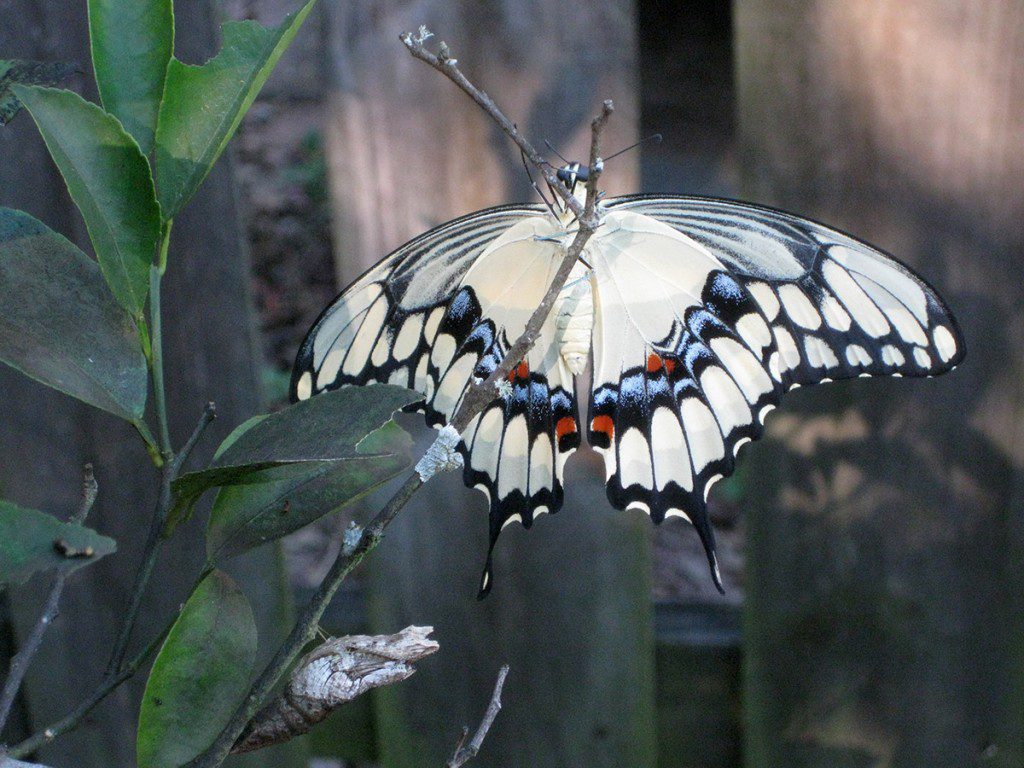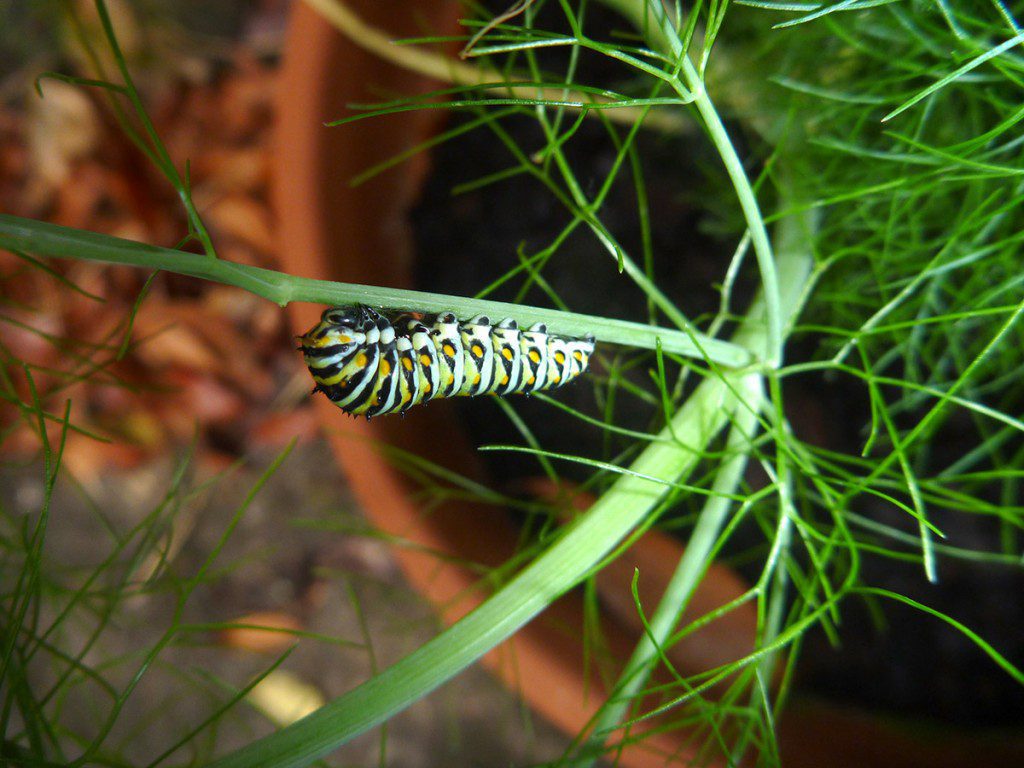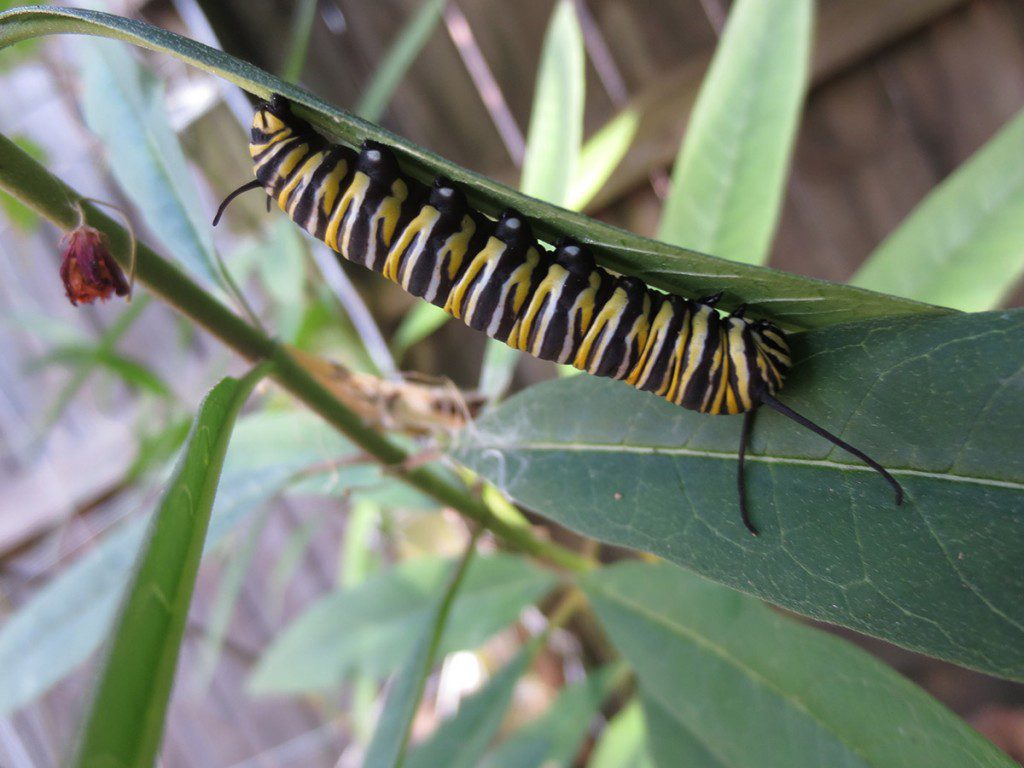Rob Diaz de Villegas WFSU-TV
Monarchs are cool, but they’re the only butterflies we see in this area that aren’t 100% local. We trek through a couple of different habitat types and get a hint of the diversity of butterflies we have here in the Red Hills of Florida and Georgia. Scroll down for a complete list of species we saw in the video. Music for the piece comes from Haiqiong Deng‘s performance on Local Routes. She performed two songs; the other song aired in the same episode as this segment. If you missed it, you can watch it on the Local Routes page.
Examining some torn up leaves in my garden one night, I started down a path that led me to become somewhat of a butterfly enthusiast. My wife and I had recommitted ourselves to making full use of the space we had to grow veggies, and part of that was some good old-fashioned pest squashing. Of course, some bugs are beneficial, so I did my due diligence before pulling the trigger. In other words, I went on Google.
The garden was going strong when our green and pole bean plants’ leaves started getting shredded. Some of the leaves had curled up edges that were glued to themselves by sticky white strands. Unfurling these little compartments revealed a green caterpillar with a big black head on it, looking like a ladybug hitching a ride. A quick search and I read that this was a bean roller caterpillar. It would one day be a long-tailed skipper, a butterfly with a striking blue back. My backyard was no longer just a garden. It was a habitat.
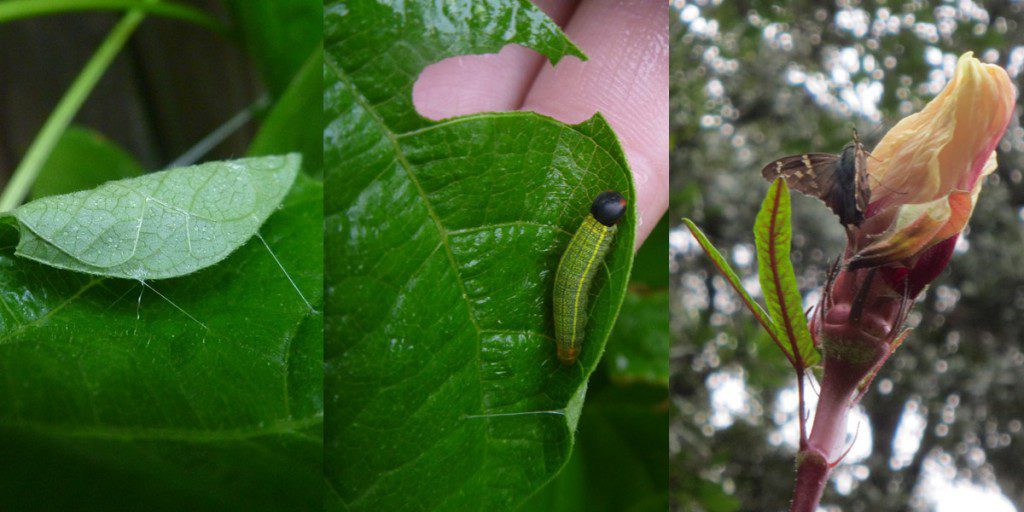
(L to R) Curled up pole bean leaf, which, upon unfurling, revealed a caterpillar known as a bean roller. These caterpillars and the resulting adult long-tailed skippers have been a fixture of our garden since early summer. The adult on the right is on a red okra flower.
Around that same time, I heard about Dean and Sally Jue. They were surveying butterflies in the Apalachicola National Forest, at Klapp-Phipps Park in north Tallahassee, and in old-growth longleaf forests in South Georgia. I went with them to Klapp-Phipps and one of the longleaf tracts, each an entirely different type of habitat with different flowers- and therefore different butterflies. Dean and Sally are using butterflies to decipher the natural order in these distinct ecosystems.
As we covered on an earlier adventure through the Red Hills, Elinor Klapp-Phipps Park was purchased by the Northwest Florida Water Management District to serve as a buffer for Lake Jackson. This is a wet slope forest, lined with streams and wetlands and through which runoff trickles downhill. The park also contains a preserve for golden-banded skippers, a close relative of the long-tailed. The golden-banded’s numbers have dropped considerably in the eastern United States, though you wouldn’t know it by visiting Klapp-Phipps when we did in the summer. Its host plant here is the wild thicket bean, which also hosts long-tailed skippers. Where the long-tailed caterpillars roll bean leaves, the golden-banded makes little triangular tents.
It was a bright day, and butterflies were out in abundance, nectaring on flowers or sunning on leaves. Klapp-Phipps has a great set of trails, and it’s easy to get lost as they cross each other in the dense woods. As with dense, wet woodlands, Klapp-Phipps doesn’t burn often. As Dean says in the video, much of it hasn’t burned in ten years. And that suits the golden-banded skipper just fine.
This is a stark contrast to our second location.
Butterflies and Fire Ecology in the Longleaf Ecosystem
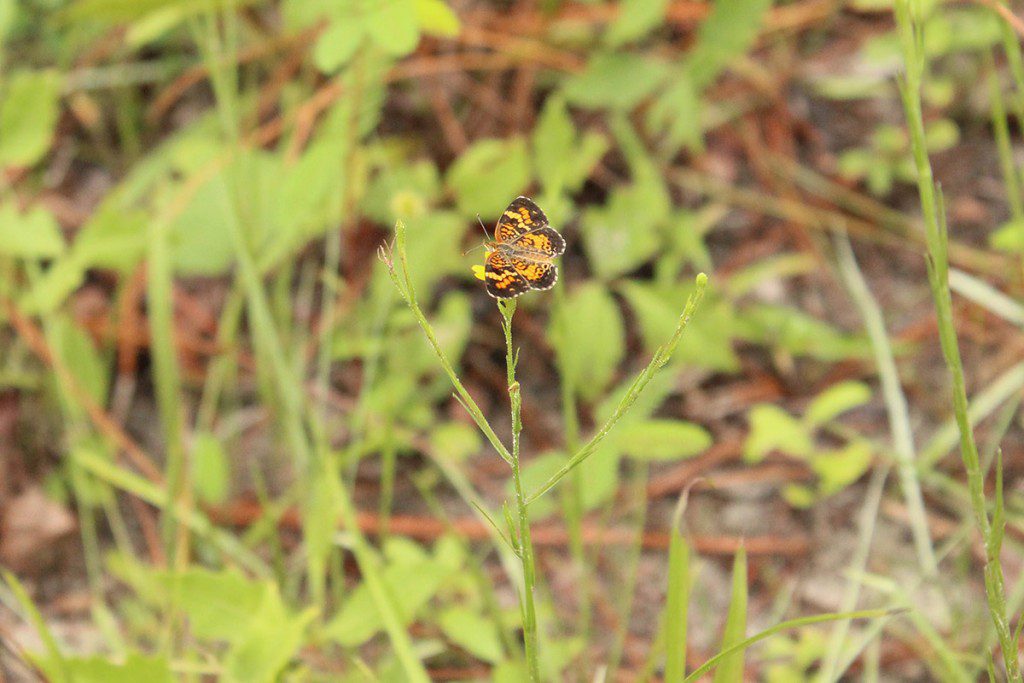
Walking through a longleaf forest, it would be easy to miss this phaon crescent sunning itself on a tall grass. Regular burning opens up the understory for grasses and flowers used by butterflies and other species.
A longleaf forest is open and dry, and is burned frequently. Land managers of such properties are always thinking about when and how often to burn. The intent is to mimic natural fire frequency, the way fire altered the land before humans interfered.
Dean and Sally’s work is geared to help figure this out. Where a full grown butterfly can escape a fire, eggs and caterpillars are obviously trapped. It stands to reason that native animals feeding on native flowers would only have survived in a location if conditions there weren’t hostile to them. So it’s reasonable to expect that large, intense fires weren’t frequent during periods where butterflies were in a larval state. What Dean and Sally have found is that it’s not just when a fire occurs that affects butterflies, but also the way fire is applied.
Sally took us next to a fallen tree. On the property they were surveying, fallen trees are not harvested for lumber as they might be at quail hunting plantations (Red Hills hunting plantations contain thousands of acres of longleaf habitat). The owners and land manager of the property want the forest to continue as it has for hundreds, if not thousands of years.
“This is a natural process.” Sally told us, “The log decomposes in place. In the meantime, if there is a fire that comes through… a prescribed burn, which is often used in this type of ecosystem, the fire is rerouted around the log, with the result that there’s a patch of unburned vegetation.”
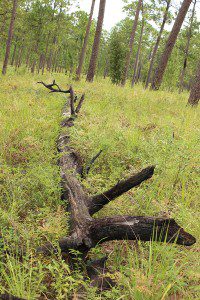
A log sitting in a longleaf forest can redirect fire and leave unburned patches on which butterfly eggs and caterpillars might reside.
Patchiness. Slow moving fire clears the brush and opens it up for grasses, succulents, and flowers that would otherwise be crowded out by hardwood trees. The fire misses some patches, perhaps redirected by a recently fallen longleaf pine. Eggs and caterpillars in the brush behind that log are spared from the fire. This is what Dean and Sally see when they look at butterfly behavior in this environment. Better understanding fire and its role in this ecosystem helps researchers and land managers better understand how to protect threatened species like gopher tortoises and red cockaded woodpeckers. It pays to pay attention to the little guy.
But while these insects play a role in the ecology of larger and more iconic species, they’re cool in their own right. When we started shooting EcoAdventures, I took an interest in a lot of the bird species I was trying to capture on video. It led me to pay more attention to birds in general. Once you start paying attention to the life around you, you start noticing just how much of it there is, and how varied and beautiful. “A lot of people from the birdwatching area have migrated to butterflies.” Dean said, “After butterflies they go to dragonflies, tiger beetles, and bees- all kinds of stuff.”
Dean and Sally help coordinate a few butterfly counts a year, where citizen scientists can help get a sense of the butterfly populations in our area. If you’re interested, you can contact them at dsjue@embarqmail.com. You can also learn more about local butterfly goings on at the North American Butterfly Association Hairstreak Chapter’s web page.
Butterfly Species Seen in the Video
Filmed at Klapp-Phipps Park unless otherwise specified.
0:11 Spicebush swallowtail nectaring(longleaf habitat)
0:18 Little metalmark (longleaf)
0:25 Golden-banded skipper nectaring on hairy leaf cup
0:39 Tropical checkered skipper
1:15 Cloudless sulfur
1:24 Golden-banded skipper
1:32 Golden-banded skipper
1:38 Golden-banded skipper nectaring
1:52 Golden-banded skipper nectaring
2:05 Golden-banded skipper
2:09 Long-tailed skipper caterpillar (garden pole bean plant)
2:16 Long-tailed skipper (longleaf)
2:34 Gray hairstreak
3:02 Spicebush swallowtail (longleaf)
3:20 Spicebush swallowtail nectaring (longleaf)
3:55 Spicebush swallowtail (longleaf)
4:11 Phaon crescent (longleaf)
4:19 Long-tailed skipper nectaring (longleaf)
4:50 Golden-banded skipper
4:52 Golden-banded skipper nectaring
4:56 Zabulon skipper
5:05 Golden-banded skipper nectaring
Using Google to Identify Caterpillars in the Garden
Once I discovered long-tailed skipper caterpillars on our bean plants, I started paying much more attention to what might be hiding under leaves or, in some cases, trying to camouflage on branches. This year, we grew a variety of vegetables and herbs, and interspersed a few flowers known to attract pollinators and other positive insects. Including the bean rollers, we had four different types of caterpillars in the garden. In one case, we were able to observe a butterfly in all of its stages.
Watering our Meyer lemon tree one day, I saw just the slightest movement on a branch. I saw what has to be one of nature’s ugliest larval butterflies, looking like a giant bird poop. It turned out that we had quite a few of them, and they were constantly grazing on the tree’s leaves. I Google image searched “ugly caterpillar citrus tree” and immediately found several photos that matched what I saw: a giant swallowtail. Such an easy identification isn’t always achieved on the first search, as a lot of what comes up are people’s Flickr photos or personal blogs, and not always sites written by biologists. Also, there are caterpillars that look alike. When I find what looks like a match, I Google the proper name I find and cross-reference with professionally produced content. That’s a good rule of thumb for any internet research: while many amateurs know their stuff and are diligent, it doesn’t hurt to check.
I kept an eye on the ugly little guys, and Amy and I discussed how many leaves we would let them eat before possibly relocating a few (we had similar discussions regarding the bean rollers). Eventually, I noticed a couple of odd structures underneath branches. It looked almost like a part of the branch. Here was its chrysalis:
One day, as I was taping an EcoAdventure on the Ochlockonee River (part of the Red Hills series we’re premiering in the early spring of 2016), Amy and our boys, Max and Xavi, saw the giant swallowtail perched aside the spent shell of its chrysalis. By the time I got home, it was gone. Luckily, our long-tailed skippers have spent more time in the garden.
The long-tailed doesn’t make its chrysalis on the bean plants where it feeds, so I’ve only seen the bean rollers and the adults while missing out on the metamorphosis. Others have disappeared outright; whether they were eaten or snuck off to make their cocoon, I don’t know. One was a caterpillar that made a good meal of our fennel plant:
We bought the fennel to attract ladybugs, and I while I’ve noticed more of them since I bought the plant, I can’t say for sure what role the plant has played. But it did host this pollinator larva. I Googled “black and green with orange spots caterpillar.” It took a few clicks, but I found it to be an eastern black swallowtail.
After eating quite a lot of the fennel leaves, it was gone. That plant has rebounded in a major way since then. And our bean plants have been productive even with little critters nibbling on its photosynthesizing leaves. As we plan next year’s spring and summer garden, I’ll be thinking about putting an assemblage of plants together that gives us fresh, delicious food while providing a habitat for these insects. Part of that is buying more milkweed.
I bought one plant and saw one whopping monarch caterpillar (above). Over the course of a week, we watched it get bigger and bigger. One night, after dinner, I searched the plant with my headlamp. It was no longer there. On one stalk of the milkweed was a tree frog. On another was a green anole. Both were either the same size or smaller than that caterpillar had gotten. Could they have eaten it? We had debated bringing it in the house with part of the stalk, to protect it from predators (they do this at Max’s preschool). I may do this next year, and I plan on buying more flowers. (And it paid off- the next year ended up being a banner year for monarchs in our yard).
We bought flower species this year with a reputation for attracting butterflies, but the butterfly’s flower of choice surprised me. They, and the few bees that we saw, love flowering basil. Typically, you clip the flowers because they take up the plant’s resources and keep the leaves from growing like we might like. But this year, I was happy to have them be habitat.
Come adventure with us in the Red Hills, Apalachicola River and Bay, the Forgotten Coast, and More! Subscribe to the WFSU Ecology Blog by Email.

Tropical milkweed in bloom. Sally Jue mentioned to me that monarchs are pretty much the only butterfly that likes milkweed as larval food, so if you’re looking to have a variety of butterflies, diversify your plant life and select both larval and nectar food plants.




